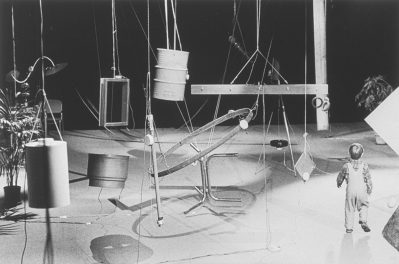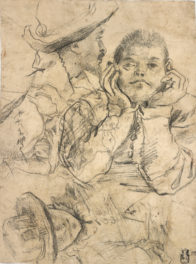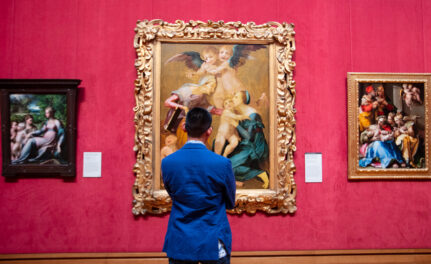Prior to the 18th and 19th centuries, artists could not use charcoal to produce finished works of art. It was only after ways to affix charcoal to surfaces emerged that artists could fall in love with it as a drawing and expressive medium. In this video, contemporary artist Timothy Mayhew demonstrates the drawing techniques perfected in France in the 19th century.
Subscribe to the Getty Museum’s YouTube channel »
More to Explore
Noir: The Romance of Black in 19th-Century French Drawings and Prints exhibition website
Transcript


[instrumental music plays throughout]
NARRATOR: Dark
Velvety
Grainy
Soft
These are some of the intrinsic qualities of charcoal that artists are drawn to.
Charcoal comes from charred pieces of wood, capable of producing a range of tones that are easily reworked. But because charcoal particles are large, they don’t readily adhere to a surface. And so finished works of art could not be made with the medium until the 18<sup>th</sup> and 19<sup>th</sup> centuries, when artists had the means to bind or “fix” it to paper—producing a golden glow.
Timothy Mayhew demonstrates the techniques used by French artists who fell in love with charcoal … among them Maxime Lalanne, whose <i>Castle Overlooking a River</i> exemplifies their methods.
Working outdoors, the artist brings an easel and a portable frame covered with stretched paper, which resembles a painter’s canvas.
The paper itself is textured—ideal for holding charcoal. The artist also brings a variety of drawing tools and materials.
Using the side of a stick of charcoal, he puts down large areas of tone—the foreground, middle ground, and sky.
He blends these broad strokes with a cloth—or a feather—to soften them.
Another way to apply the medium smoothly is with a brush dipped into a powdery form of charcoal.
To make marks, 19<sup>th</sup>-century artists typically used a pencil-like holder for charcoal, which they handled like a small paintbrush.
The key is to apply everything lightly, so that the luminous white of the paper shows through, and marks are easy to erase.
Drawing with charcoal also involves selectively removing it, to create highlights. Various tools can be used, including a brush. Artists of the past often used kneaded bread, just like an eraser. Tightly rolled paper or leather with a tapered end, called a “stump,” also works well.
Stumps or a finger can be used for blending.
A charcoal drawing emerges over time, through layers of soft tones and selectively placed darker ones.
Nineteenth-century artists typically protected their drawings by brushing a resin-based fixative solution across the back of the paper.
In 1850s France, artists produced soft, ethereal looking landscapes with charcoal. Only a few decades later, darker toned drawings were more in vogue, typically representing somber subjects, or night scenes.
Artists began working not just with charcoal, but with similar powdery materials—black chalk, Conté crayon, pastel—or they combined them.
Experimentation emphasized the medium itself as integral to a work of art.
[instrumental music plays throughout]
NARRATOR: Dark
Velvety
Grainy
Soft
These are some of the intrinsic qualities of charcoal that artists are drawn to.
Charcoal comes from charred pieces of wood, capable of producing a range of tones that are easily rew...




Comments on this post are now closed.